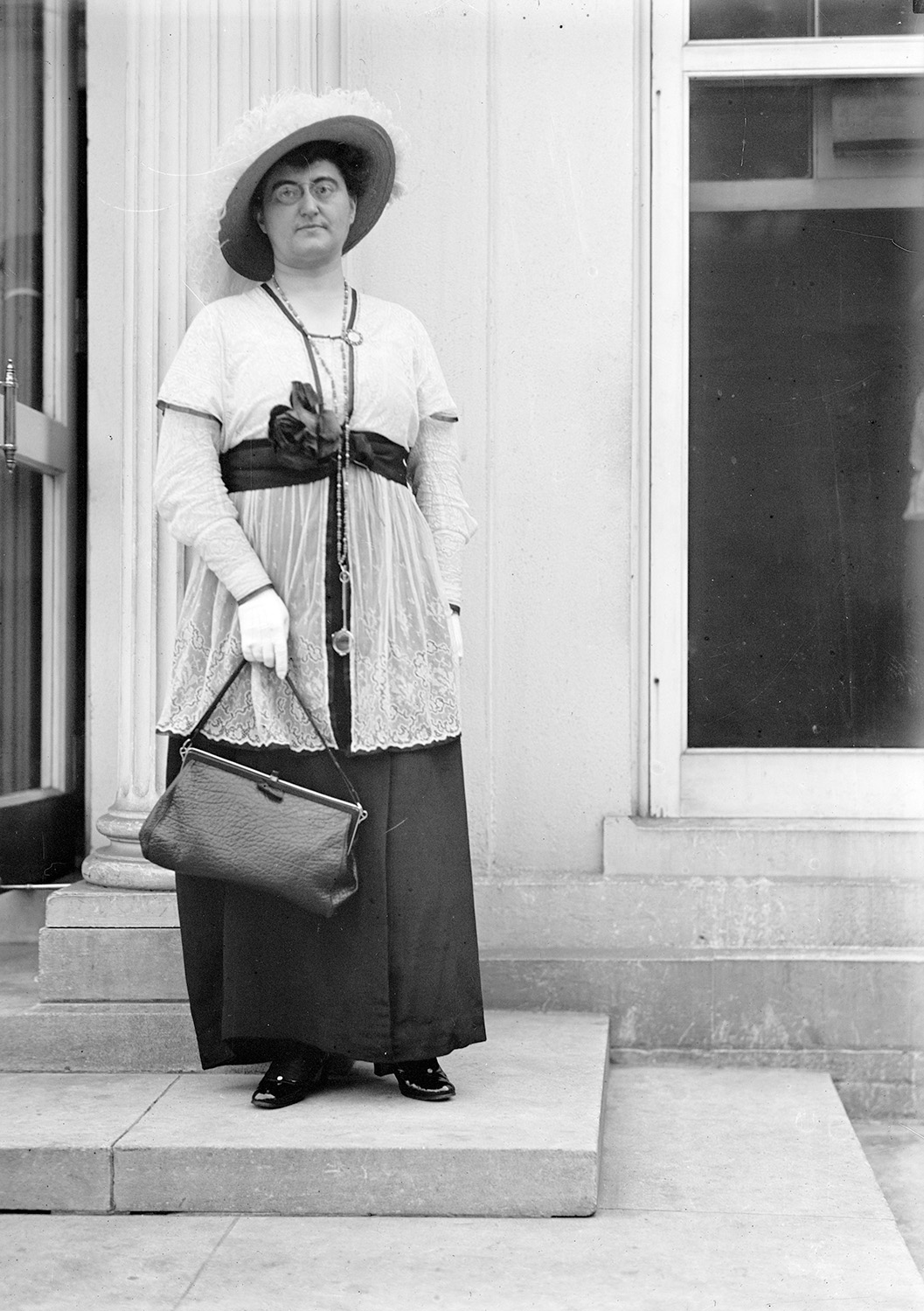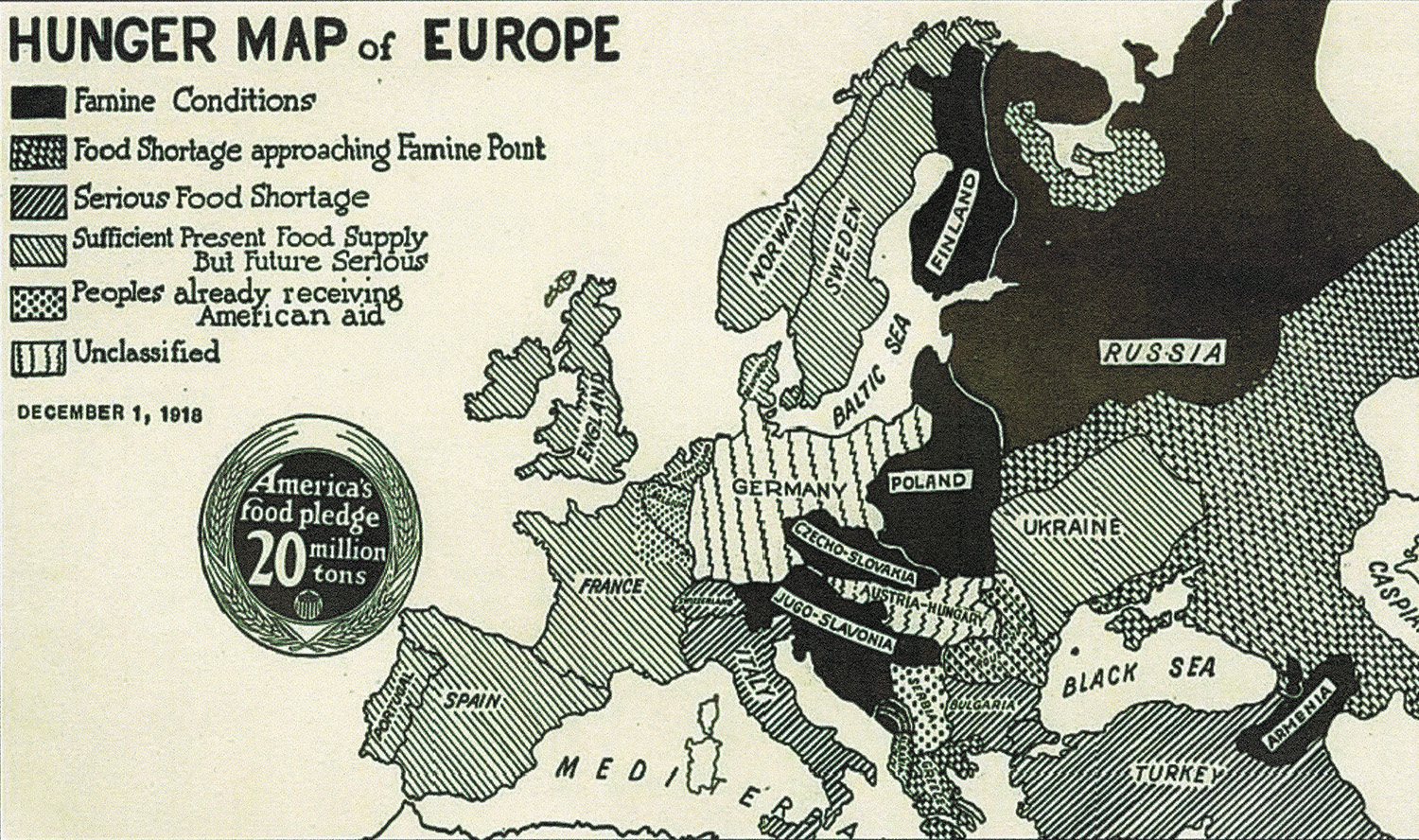2122nd Stated Meeting | March 20, 2024
David Rubenstein Forum at the University of Chicago and Virtual
A Jonathan F. Fanton Lecture
On March 20, 2024, the Academy’s University of Chicago Program Committee hosted an evening with historian Tara Zahra. Informed by her archival research and the themes in her most recent book, Against the World: Anti-Globalism and Mass Politics Between the World Wars, Professor Zahra discussed how the forces of early-twentieth-century global instability—the Spanish flu, the Great Depression, ethnonationalism, the development of both democracies and dictatorships—can help us better understand our own contemporary political moment. Following her presentation, she joined Academy President David W. Oxtoby in a conversation about the past, present, and future of our interconnected, yet increasingly divided, world. John Mark Hansen, a member of the Academy’s Board of Directors, opened the program. The event was organized as a Jonathan F. Fanton Lecture, in honor of the past president of the Academy whose career has been dedicated to solving global issues. Jonathan F. Fanton and his wife Cynthia were in attendance. An edited version of Professor Zahra’s remarks and her conversation with President Oxtoby follows.
Tara Zahra
Tara Zahra is Hanna Holborn Gray Professor of East European History and the College, and Roman Family Director of the Neubauer Collegium for Culture and Society at the University of Chicago. She was elected a Fellow of the American Academy in 2017.
Thank you for the honor of being invited to speak to you this evening. It is really a huge privilege. I’m grateful to all of my colleagues and friends who have come, and to all of you in the virtual audience who have tuned in as well.
I’m going to be talking mostly about my recent book, Against the World: Anti-Globalism and Mass Politics Between the World Wars, which was published a year ago. I’m assuming that most of you have not read the book so I thought I would tell you a little bit about why and how I wrote it and what it’s about, and then I think we’ll have an opportunity in the Q&A to bring the conversation more into the present.
Historians come up with topics for books in many different ways. We might be inspired by a source we find in an archive. Sometimes it’s a story. Sometimes it’s a theoretical intervention. For me, my book was inspired by contemporary events. I began my research in 2016. There was a refugee crisis in Europe, Donald Trump had been elected, British citizens had voted for Brexit, and right-wing populist regimes were on the rise everywhere, but especially in the part of the world that I study, Eastern Europe. I could not have predicted when I began my research that it would be massively interrupted by a disruption in global travel or that the COVID-19 pandemic would stop globalization in its tracks in a way that nobody could have imagined. Nor could I have predicted a war in Ukraine that would disrupt global supply chains and bring a new focus on energy independence. As in the interwar era, anti-globalism has recently been resurgent on the left and right, in democracies and in authoritarian states alike.
As a historian, however, I see this as a story not only about what the past can teach us about the present, although of course I think that is important. But I have been even more struck by the ways in which the present has reshaped my own understanding of the past—everything from the effects of World War I and the Great Depression to the rise of fascism. As a historian who writes about twentieth-century Europe, I have been reading, writing, thinking, and teaching about the 1920s and 1930s for two decades now. But the events of the past years have really made me see things differently—to see the interwar period not just as a story about a contest between fascism and democracy or left and right, as it has typically been told, but also as a struggle over globalization, between globalists and anti-globalists.
So the first question I had to answer, and you might have the same question, was what is a globalist or globalism or even globalization? Many definitions are possible, but I chose to use the term “anti-globalism” to refer to movements that sought to insulate societies from policies, people, and institutions that they associated with globalization or internationalism. And one of the tricks of this project is that I’m talking both about a real process and an imagined process, and at times the two come together and at times they’re very different. Sometimes these movements produce deglobalization: the actual slowdown or curtailment of transnational flows of people, ideas, goods, and capital. But people in the 1920s and 1930s did not use the terms globalization or deglobalization or even globalism and anti-globalism. They spoke instead of freedom versus dependence on the global economy, nationalism versus internationalism, sovereignty and its violation. They sought self-sufficiency, economic insulation, and autarky.
In these Google Ngrams, it is interesting to see how in three different languages—German, English, and Italian—the term “autarky” peaks right at the onset of World War II. So the terms I’m using, globalism and globalization, are consciously anachronistic, but I chose to use them anyway because I think they best capture the process of accelerating connection and disconnection that I’m trying to describe and also because I haven’t found a better term, although I spent quite a bit of time thinking about it.
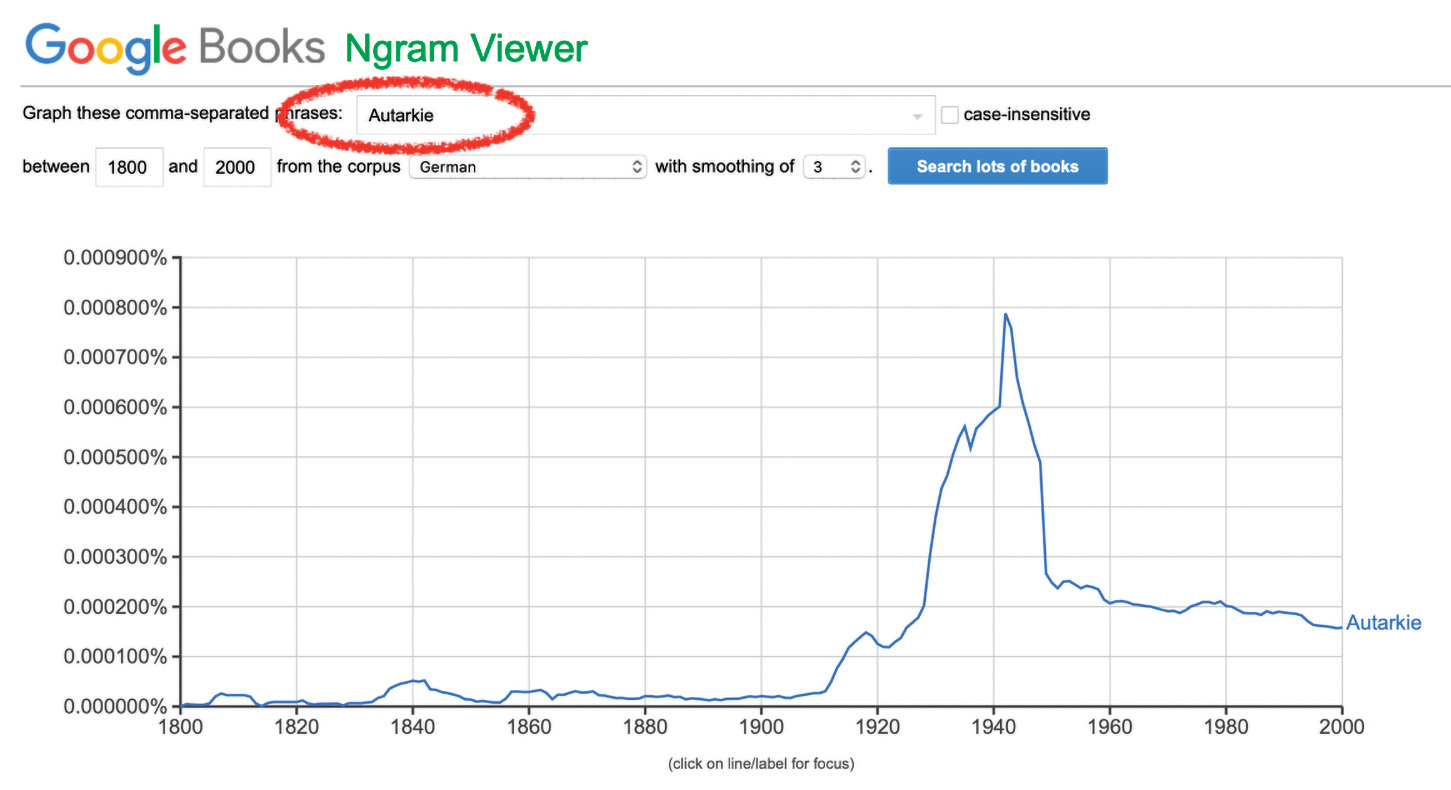
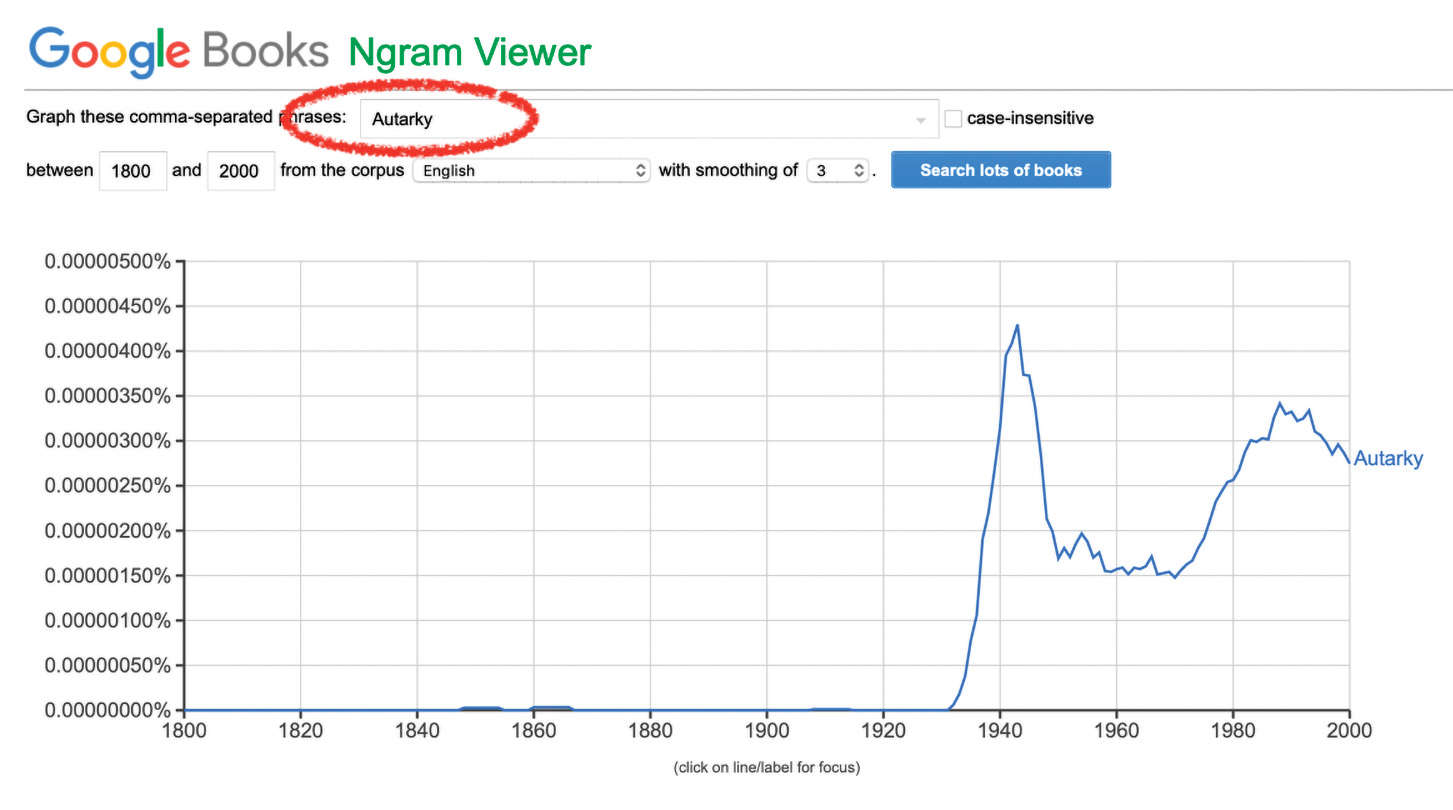
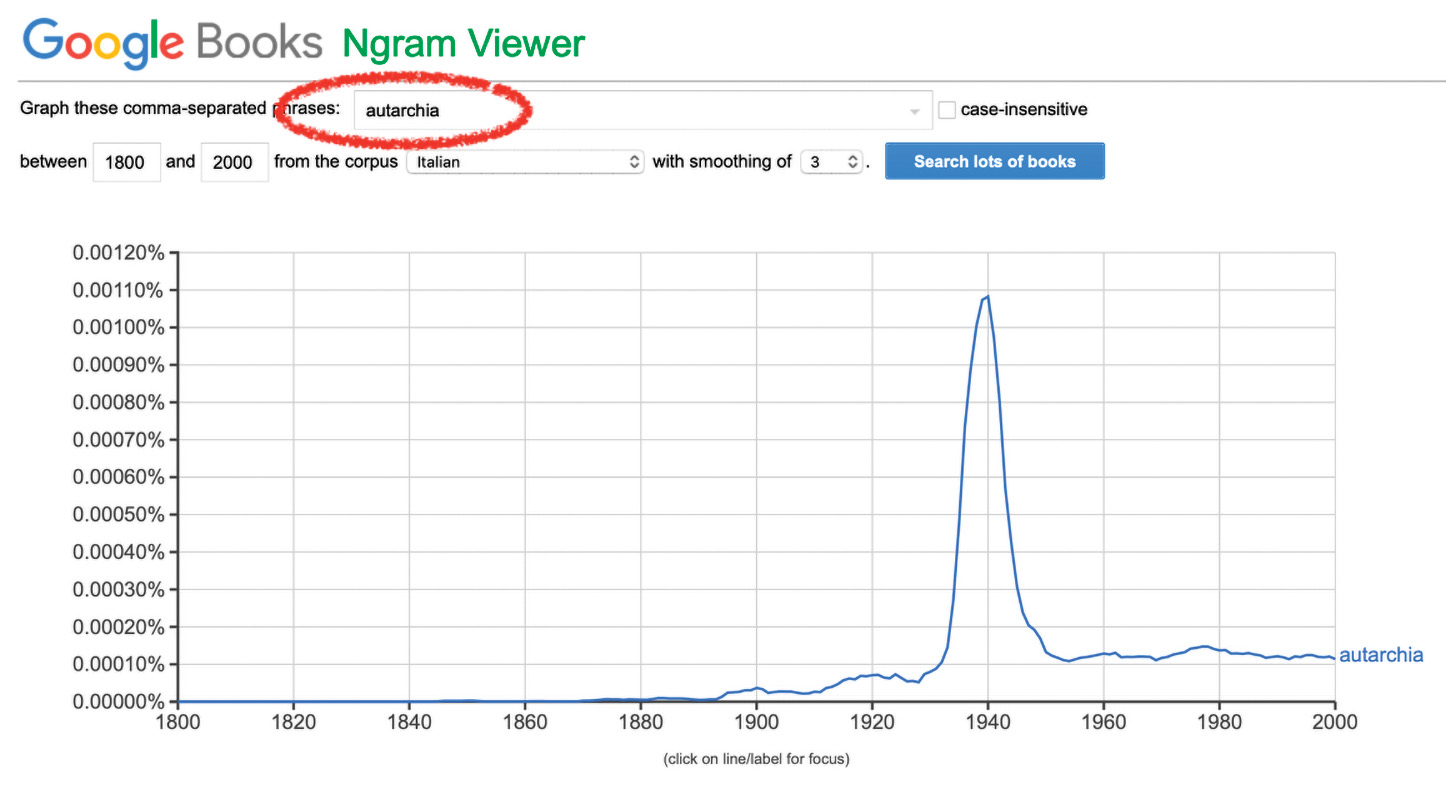
I also had to make some important choices about geography in writing this book, which is focused primarily on Europe and the United States. I made those choices based on a desire to do research with primary sources, but also a desire to show the diversity of anti-global movements: that anti-globalism was a force both in small and large countries, in fascist countries as well as in democracies, and in empires as well as in anti-colonial movements. I wanted to show also that while anti-globalism was a global phenomenon, it varied tremendously based on local context. Central Europe has a special place in this account, not only because that has been my own focus as a historian, but also because I believe it really was at the epicenter of anti-global politics in this interwar period.
In writing this book I also really wanted to focus it around particular characters, some of whom appear throughout the book. I began with Rosika Schwimmer, a Hungarian-Jewish feminist, pacifist, and internationalist who was at the height of her powers before World War I.
One of my colleagues claims she is my alter ego, but I hope that is not true. In 1913, Schwimmer felt that the world was moving in her direction, toward greater peace, prosperity, and equality. And that was an assumption shared by many progressive internationalists at the time. World War I shattered that illusion. During the war she teamed up with none other than Henry Ford to charter a ship, which they called the “Peace Ship,” to sail from Hoboken to Europe to convince European leaders to end the war. It was a fiasco that was ridiculed by the press. Ford snuck off the ship in the middle of the night and went home, and some people claimed it was the origins of his anti-Semitism. He never spoke to Schwimmer again. Ford was anti-Semitic long before that, but I think his prejudice didn’t get better after this incident.
Ford became a kind of globalizing anti-globalist. His cars were sold everywhere in the world, but he was notoriously anti-Semitic, anti-finance, and he actually attempted to achieve autarky within his own firm by creating a company town and rubber plantation in Brazil called Fordlandia. Schwimmer, meanwhile, had to flee the right-wing counterrevolutionary government in post-World War I Hungary. She came to America, but was denied citizenship in a case that reached the Supreme Court because she refused to pledge to bear arms in defense of the United States. Never mind that she was a diabetic woman in her fifties. It was the principle that counted, and she died still stateless in 1948. She never succeeded in getting her citizenship. I see her trajectory as emblematic of the history of globalism in this period, and you could see why I wouldn’t want her as my alter ego because it didn’t end well.
The book is divided into three parts because there were three major phases of this anti-global turn of the interwar wars. I quickly realized that I couldn’t just start in 1914, which was my original idea. Instead, I see anti-globalism as a product of two developments that coincided in the late nineteenth century. First was the acceleration of globalization itself, and that is a point that I try to make throughout the book. Just because this is a book about anti-globalism doesn’t mean that I’m denying that there was still globalization. The two were inextricably intertwined. And the second was the rise of mass politics, which meant that people negatively affected by global integration, or who felt like they were negatively affected, had the ability to talk back at the ballot box or in the streets.
Before World War I, it was already clear to many people that the gains from free trade, imperial expansion, and mass migration were not being shared equally. Restrictions on migration and trade were multiplying. But World War I greatly intensified skepticism about the rewards and risks of global interdependence. Many progressive internationalists at the turn of the twentieth century believed that the globalization of the economy would make people so interdependent that it would be impossible to go to war. That illusion turned out to be false. The war also brought transatlantic migration to a halt and produced, to use today’s terms, unprecedented supply chain issues. Most famously, the Allies blockaded the Central Powers, preventing food and crucial supplies from reaching civilians. The number of Germans and Austrians who starved to death is still being debated by historians, but what’s undeniable is that many Central Europeans blamed that blockade for their defeat and vowed that they would never again be dependent for their security or survival on imported food.
Food, and the desire for what we would today call food sovereignty, plays a huge role in the rise of anti-globalism in this period and in the story I tell.
After the war, the reaction to left-wing forms of globalism, both real and imagined, was immediate and intensely violent. In Budapest and in Munich, counterrevolutionary paramilitary groups hunted Jews like Rosika Schwimmer in the street, because anti-Semites linked Jews to global capitalism and international Bolshevism. In the United States, there was a Red Scare. The Klan was on the rise, targeting immigrants as well as Blacks. Prohibition reflected animosity toward Catholic immigrants. The so-called “Spanish flu” pandemic, which is something I hadn’t really thought about before 2020, intensified popular xenophobia, as migrants were associated with disease. New laws passed in the 1920s further restricted mobility in the name of protecting America’s racial stock.
Anti-global movements were also closely linked to the collapse of continental empires and new challenges to overseas empires in this period. One of the most obvious parallels to interwar movements for autarky in Europe was the Swadeshi movement in India, in which anti-colonialists boycotted foreign goods and urged women in particular, but everyone really, to spin their own cloth. Yet anticolonial advocates of self-sufficiency in interwar India, such as Gandhi, preached a self-consciously globalist political agenda. It is a good illustration of how flexible and malleable these ideas really were. Gandhi argued that more economic independence would produce a more genuine form of internationalism based on cooperation rather than exploitation. The problem was that while anticolonial nationalists were demanding an end to Empire, many states began to see the expansion and consolidation of Empires as the best route to achieving what they called their own freedom from the global economy. “Empire Shopping” became a mass movement in Great Britian, with stores selling supposedly only goods from the Empire. Women were encouraged to purchase, cook, and eat only foods grown in the Empire, which often really meant supporting white farmers in places like Canada, Australia, and Kenya.
The revolt against globalization was also closely linked to the collapse of continental empires. It was particularly fierce in states that had either lost their empires at the end of World War I, like Germany and Austria, or felt as though they had lost, like Italy. Austria-Hungary had once been the largest free trade zone in Europe. It was a kind of mini global economy, and its dissolution at the end of the war left consumers cut off from producers in successor states that erected high tariffs against one another. Austrians insisted that their new rump state was not viable. Historian Quinn Slobodian has done a recent study in which he argues that the kind of liberal economic ideas that we associate with the Chicago School originated in Austria as economists attempted to prevent this kind of thing from ever happening again, to insulate markets from democracy, and to prevent these types of protective regimes from coming into place.
This led, in turn, to a movement for what was called “settlement” or “internal colonization.” Or another term you may have heard is “back to the land” movement. The basic idea is that all these unemployed workers would go back to the land, grow their own food, and contribute to the self-sufficiency of both the individual, the family, and the nation—a very unpractical idea for a country like Austria. You can predict that it didn’t go so well. In the early 1920s, many Austrian Socialists, such as Otto Neurath and Margarete Schütte-Lihotzky, developed a utopian vision of settlers’ lives in modern, healthy, well-planned homes and communities.
Margarete Schütte-Lihotzky was the first female architect in Austria, and she is most famous for what is called the Frankfurt Kitchen, which is probably a little like your kitchen if you live in a small apartment. This was a revolution in kitchen design, with everything close together and in one space. She designed this type of kitchen originally for a settler’s home in Austria. It became famous in Frankfurt, I think in 1926, and the rest is history.
In reality, however, the settlement movement—and the broader movement for autarky—required a lot of sacrifice of convenience, luxury, choice, and variety for the sake of independence. One settlement advocate suggested that settlers should trade their traditional Austrian diets of meat and potatoes for a local diet consisting solely of chestnuts, goat’s milk, and apples. These projects had mixed results. Settlers on the outskirts of Vienna had no schools, no doctors, no public transportation, and no gas, electricity, or sewage in the 1930s. Settlers who were interviewed decades later recalled hunger and cold due to the lack of real heating in the winter. Female settlers, and I did try to keep women at the forefront of the story throughout the book, in part because histories of globalization tend to leave them out, had a particularly rough life. This whole idea of the self-sufficient family farm relied on the unpaid labor of women and children.
One of the threads that I try to draw throughout the book is to show how these anti-global movements in some ways were about reversing some of the progress women had made in the previous decade. Female migrants became symbols of globalization’s potential evils, much like Jews, and in some ways the settlement movement tried to reverse that dispersion of people through migration and anchor women in the home and on the land.
The third part of the book centers on the 1930s and the consequences of the Great Depression. The lesson millions of people learned from the Depression was that globalization was highly risky. People had to reckon with the fact that the collapse of a bank in Vienna or New York would result in the loss of jobs and fortunes for people on the other side of the world. Self-sufficiency became the name of the game. You had to insulate yourself from this global economy.
In fascist Italy, Mussolini’s relentless propaganda instructed Italians, and particularly women, on the value of autarky. Italy had long maintained a global presence through the millions of emigrants who settled in Europe and North and South America beginning in the late nineteenth century and continuing into the early twentieth century. Emigration had been the dominant solution to the chronic problems of poverty and underemployment in Italy. Until the fascist era, the Italian government sought to transform emigrant communities into a diasporic empire that would substitute for formal colonies. One of the reasons Italian Americans developed such a cohesive sense of identity and community is that the Italian government invested a huge amount of money and resources into maintaining ties between Italians abroad and those in Italy to keep them feeling Italian in the hope that they would eventually return. But in the 1920s, the United States passed severe restrictions on immigration, particularly for people from Southern and Eastern Europe, basically closing the safety valve of immigration. Mussolini sought to cope with that problem by deglobalizing Italians. He wanted to actively prevent emigration and resettle potential migrants internally or in his own formal empire in Africa.
Anti-internationalism was always part of the Nazi Party platform. The Nazi ideal of Blood and Soil was formed in opposition to Jewish cosmopolitanism, migration, liberal internationalism, and the global economy. Yet, the regime conveyed contradictory messages to the German public in the 1930s. German women were flooded with propaganda urging them to cook and eat only local foods, boycott chain stores, and take up spinning to knit their own textiles. Nazi leaders continued to promote settlement in their propaganda, but behind the scenes, experts admitted that it was an unrealistic goal. One expert said, “Even if we had 20 million sheep, we would only be able to produce 20 percent of the wool we consume domestically.” The solution they came up with to this conundrum was imperial expansion, which the Nazi regime called Grossraumwirtschaft, meaning a large regional economy. The idea was basically we are going to dominate Europe with Germans in control.
After 1939, Nazi policymakers shifted from seeking autarky for the German nation toward achieving autarky for continental Europe, dominated of course by Germany. This was an idea that was inspired first and foremost by the United States, which was the only country in the world at the time that was capable of feeding itself. For Hitler, since the Americans had their empire and the British had their empire, he wanted his in the name of achieving self-sufficiency. It was also an idea that was being pursued by Japan in East Asia at the time.
This interwar quest for greater self-sufficiency ultimately justified racist forms of imperial conquest. But it was never only a far-right fantasy. People rushed back to the land in democracies as well as in dictatorships. For example, in the United States during the Great Depression, more people moved from the city to the countryside than from country to city, reversing a decades-long trend of urbanization. A 1933 Wall Street Journal ad urged readers to “Buy an abandoned farm and live on trout and applejack until the upturn!”
During the Great Depression, Henry Ford required his workers in Michigan to cultivate subsistence gardens. His idea was that all of his men should keep one foot in industry and another on the land. He was a fierce opponent of the New Deal and saw subsistence farming as an alternative to welfare.
The back-to-the-land movement in the United States was also popularized by lifestyle reformers like Ralph Borsodi. On his farm in upstate New York, Borsodi, his wife, and two children produced everything they needed. Their diet consisted entirely of foods they grew themselves. Borsodi, like Ford, saw homesteading as an alternative to the welfare state. Borsodi and Ford were both staunch opponents of the New Deal, but FDR actually agreed with many of their ideas. One New Deal initiative involved resettling tens of thousands of unemployed workers on what were called “subsistence homesteads,” where they were supposed to grow their own food. This wasn’t about autarky for the nation, but for the individual.
The images below are one of the most famous of these settlements: Jersey Homesteads. They took Jewish textile workers from New York City and put them into a collective farming community in New Jersey. It was very unsuccessful as a farming community, but quite successful as a new version of the suburbs.
In some ways, the Great Depression was not the beginning of a mass return to the land or to farming in the United States, but may have accelerated a population shift toward the suburbs.
Interwar anti-globalism had many unexpected, long-term consequences. Often it produced new forms of globalization or internationalism. In the 1930s, for example, companies like the Czechoslovak Bat’a Shoe Company and the Ford Motor Company responded to anti-foreign sentiment and high tariffs by moving production overseas and using local labor. They exported factories instead of shoes and cars and advertised themselves as “local firms.” Bat’a’s advertisements in India in the 1930s boasted that Bat’a shoes were all “Made in India” by Indians. Many Indians I meet today still think Bat’a is an Indian company. It was in some ways the beginning of the multinational corporation as we know it.
There were many other lasting consequences of anti-globalism, both big and small. New technologies and products were developed in this quest for self-sufficiency, from synthetic fabrics like rayon to Chinotto, which is a beverage that was supposed to replace Coca-Cola in Italy, to the synthetic rubber that was unsuccessfully manufactured at Auschwitz.
Meanwhile, internationalists did not simply pack up and go home. Experts in organizations like the League of Nations developed new initiatives to aid the victims of deglobalization, namely, minorities and stateless people. League of Nations economists in the 1930s also promoted new ideas that they hoped would spread the benefits of globalization more equally, by addressing poverty and increasing consumption. So I think in many ways they set the stage, with the Bretton Woods Agreement in particular, for the construction of the postwar welfare state and institutions for economic development.
Since this is a history with presentist origins, I will end with some thoughts about comparisons with the contemporary moment. In addition to the many obvious similarities, there are some important differences that are worth highlighting. For example, many anti-globalists on the left today are motivated by environmental concerns, and as far as I can tell these concerns were absent in the 1920s and 1930s. Anti-globalists today have targeted the movement of people and goods, but not the mobility of capital, which continues to flow freely. Finally, today’s anti-globalism is different because of the events of the 1930s and 1940s and because of postwar decolonization, which prompted efforts to reform and restructure the architecture of the global economy, to make it more stable and more fair. Arguably, the most important similarity between then and now may be the fact that the long-term consequences of anti-globalism are unpredictable. We still don’t know what new forms of globalism and internationalism might emerge from our current anti-global moment. I’ll end there on that somewhat hopeful note.
DAVID OXTOBY: Thank you, Tara, for your very thought-provoking presentation. I have a few questions and then we will save some time at the end for questions from our audience. In your work, you feature the voices of real people, some of them famous, but some less so. In recent years, the Academy has been trying to incorporate the voices of America, and the faces of America too, in some of our projects. We have been going around the country and listening to people. What is your research methodology for identifying the people you feature in your work?
TARA ZAHRA: The research for this project was incredibly interesting and fun. But of course since I am working on the era of the 1920s and 1930s, I can’t just go out and ask people how they felt about globalization. So as I was seeking to capture the less known voices and opinions, I looked in some of the places that are really common for historians to use, places like diplomatic archives. You may expect diplomatic archives to have only records about negotiations between foreign leaders, but in fact in the archives of consular offices, you can find hundreds of letters written by local migrants in those towns, complaining about the conditions or talking about their problems.
I think the same goes for government archives. One of the most interesting sources that I came across was in a Nazi archive, where I found hundreds of letters complaining to the Nazi regime that they hadn’t done enough for the small businessperson, that they hadn’t closed down the department store or the chain store as they had promised to. Also, the Homestead Act in the United States produced thousands of letters by people who wanted their own subsistence homesteads, and they wrote to the government asking to be a part of the program. Those are some of the ways in which I was able to capture some of those perspectives.
OXTOBY: In 2022, we published a volume of Dædalus that explored the loss of trust in institutions and in experts. Was there a loss of trust in the interwar period? How did the people in the United States but also in Europe think about the institutions in their countries?
ZAHRA: That’s a great question and not one that I have really thought about before. But I would say no, there wasn’t a loss of trust. Populism obviously involves some kind of skepticism toward elites and you can certainly see that. But the dominant voice is the one that is trying to harness the government to do the things that you want it to do. The reason I could find all those letters in the archive is that people actually believed that if they wrote to the Department of Labor they might get a subsistence homestead or that the Nazi Party was going to listen to them. Lots of experts were involved in these projects. It is not a part of the story that I focus intensely on, but as I alluded to, there was a focus in the sciences—from agricultural science to chemistry to biology—on the development of synthetic resources and products. Auschwitz had a garden and there were women who were trying to grow a plant that could substitute for rubber.
OXTOBY: In a more critical vein, there were also movements in the first part of the twentieth century, such as race science and eugenics, that came from experts, particularly from people in universities. How did universities position themselves as experts?
ZAHRA: I know more about what was going on in Europe than in the United States, and certainly universities were largely controlled by the government. In the Nazi case, the dissenters were thrown out and all of these ideas were promoted from within. The science and expertise that went toward thinking about autarky was also often rooted in universities. Some of the practical implementation went to factories and concentration camps, but the scientific ideas were certainly developed in universities.
OXTOBY: How do issues of communication connect with globalization? I think the assumption before World War I was as we communicate more, we will become more global. But some of this goes in the opposite direction. Do we have lessons for the present day about the effects of globalization on communication and the media?
ZAHRA: Before World War I, a telegram message from the United States to Australia would take about two days. After the war, it took more than two weeks because the telegraph lines had been destroyed. So there was a massive disruption of communication as well as of trade and migration. I think that in many ways censorship and false information can pose the same kinds of threats as broken telegraph lines. The fragmentation of information that we’re dealing with today is unprecedented in many ways, but I do think that there’s a story to be told about the history of communication from the past and present and it’s worth thinking about. The 1920s and 1930s were an era for huge advancements in propaganda and in the spreading of falsehoods of all kinds.
OXTOBY: You talk about anti-global sentiment connecting to diminished empathy. People don’t care about what is happening to others—whether they are starving, suffering, and the like. What is the role of the arts and the humanities to bring those issues to people in a more personal way than just reading about statistics? Did any of the literature in the 1920s and 1930s have an impact on making people more empathetic and concerned about global issues?
ZAHRA: The historical literature of the interwar period has focused largely on the rise of internationalism and humanitarianism. I wouldn’t say that empathy was completely lacking. In fact, there was a massive growth of organizations devoted to promoting empathy in various ways through humanitarian endeavors. But the arts and the humanities, I think, were imagined to be a part of the story, that by fostering cultural exchange through literature and music, you could create empathy that would lead to a more global or peaceful world. I believe that the arts and the humanities have a role to play, but I’m not sure that that idea was institutionalized back then.
OXTOBY: There’s an American faith in democracy that if you let people vote, things will get better. But we have seen many cases, and I’m sure there are some in the era that you have studied, in which voting and democracy do not always lead to positive changes. Is there anything in your research that relates to what we are seeing today?
ZAHRA: Mass politics has always fascinated me, but I think mass politics is not always the same as democracy. Democracy involves institutions of certain kinds. But I don’t want to say mass politics isn’t democracy either. What I have been most drawn to are those moments when democracy or mass politics doesn’t necessarily lead to the outcome that I like. And in my own research what I’ve tried to do is understand that. As a historian, I don’t know that I have the tools or the ability to solve the problem, but I can shed light on why. One of the things that was really important to me in my book was not just to say, “Here are a bunch of people who were against globalization,” but to really get at their perspectives and experiences and to include the voices of people who felt threatened or harmed by globalization. So I think the best I can do on that question is really just to say I’m going to continue to think about why, but I don’t know that I’ll ever have the answer either.
OXTOBY: My last question before we turn to some Q&A with our audience. You end on a somewhat hopeful note about the postwar realization that we need to work together. As a historian it may be hard to project, but are those organizations that were set up in that postwar period still viable at the present time? Or do we need to rethink how those basic organizations are carrying forward into the future?
ZAHRA: The Bretton Woods system famously broke down, but aspects of it remained, like full employment, consumer-driven economies, economic development, and the welfare state. These ideas have been under attack or threatened. I think we need a new Bretton Woods. I don’t think globalization is actually going to end, but I think the architecture of globalization is going to be restructured. That is a hopeful reading.
OXTOBY: We have some time for a few questions from our audience.
AUDIENCE MEMBER: I’m curious about how the linkages between people on the ground and with very broad institutions can be supported.
ZAHRA: I think it’s an important insight. I mentioned briefly the work of a colleague, Quinn Slobodian, and his argument is precisely that economists recognized the threat that democracy posed to globalization; there was an inkling of that idea in the interwar period to insulate markets from democracy. So how do you repair that? That’s a great question. I wish I knew. The youth in Europe felt loyalty to or identified with the European project. So I don’t think it’s impossible to create affinities. I hope some of the political scientists in the room will be able to solve this question.
OXTOBY: We have a question from someone in our virtual audience. “From your historical insight, how do you think the series of recent wars affected attitudes toward globalization? Consider Ukraine, Afghanistan, Iraq, Gaza.”
ZAHRA: For the war in the Middle East, large numbers of people are mobilized politically on all sides about an issue and a place that is far from home. In Ukraine, and you see this time and time again in history, there was an initial wave of enthusiasm or support that dwindled with time pretty quickly. So it’s hard to predict where it’s going to go. But it was incredibly heartwarming when the war in Ukraine broke out and all of these countries opened their doors and welcomed the Ukrainians in. But that represented a very limited form of empathy. Poland and Hungary had not welcomed the Syrian refugees who were also knocking on their door, so there was a kind of affinity based on an imagined white European Christian identity. And from what I’m hearing about what is going on in Poland, some of the empathy is starting to fade.
AUDIENCE MEMBER: Could you comment on externalities? I’m thinking about things like the Dust Bowl in the United States during the 1930s or some other climate change events. How does that affect the global response? Ukraine would be a good example. Another example would be the problems that occurred in Africa in the Sahel and starvation that occurred in Biafra. We don’t as human beings necessarily have control over those things.
ZAHRA: I think a lot of what you’re talking about are issues that my colleagues who focus more on environmental history are deeply engaged in. I think what they might say is that none of those issues were out of our control. Whether it is the Dust Bowl or the Sahel or climate change today, human decisions and political decisions produced those crises. But once they are set in motion, the people who are affected by them often are not individually responsible and don’t have control. What is so interesting about the current moment is that you have a global issue that can only be solved through global cooperation, though it may be solved in part by pulling back from globalization. In my own research, I neglected the environmental story because I didn’t see environmentalism as a motivation at the time, but I do think that these moments had serious environmental consequences and those would also be very interesting.
AUDIENCE MEMBER: I was impressed by the way you started with a feminist, and I want to follow up on that a bit. Did you look into demographic factors during your research? The question of a women’s movement and of reproductive rights is now very much on the front burner for all of Europe and the United States. And so too is the fear of population loss. I was wondering how that fed into what you found in your research.
ZAHRA: I think you’re right to notice those echoes in contemporary discussions. The land movement was also a push for bigger families because you needed huge families to work on these self-sufficient farms. Pronatalism and eugenics were dominant ideas in the 1920s and 1930s, and the solution was never to have more immigrants to increase your population. The right kind of people had to reproduce and if you gave them land, then maybe they would do that. But the evidence, as many of you know, is that even in Nazi Germany, where there were huge incentives like marriage loans to increase family sizes, it didn’t work. Birth rates continued to go down.
AUDIENCE MEMBER: How do human rights and international treaties, going back to Eleanor Roosevelt, affect attitudes toward globalization and anti-globalization?
ZAHRA: I’m very interested in the history of human rights, and I haven’t really thought about it in relationship to this topic. Off the top of my head, I would say that a lot of people see the origins of international human rights movements to be at least partly in the interwar period. I don’t know if the international organizations devoted to humanitarian causes had quite that language of human rights yet, but their mission was to aid the victims of de-globalization: that is, minorities, stateless people, and victims of famine—the people who were most deeply affected by this change in the world order. It is possible that today there may be more organizations that are devoted to those kinds of issues, although as someone who teaches the history of human rights, I think among undergraduates at the University of Chicago the language of human rights has been somewhat supplanted by a language of social justice.
OXTOBY: I hope everyone has enjoyed this program as much as I have. I would like to thank Tara for her stimulating presentation and thoughtful comments. And let me thank our audience for joining us today. This concludes the 2122nd Stated Meeting of the American Academy.
© 2024 by Tara Zahra
To view or listen to the presentation, visit the Academy’s website.


